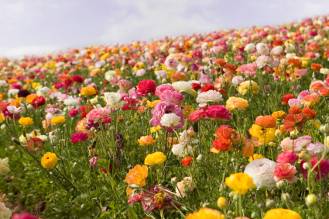 Spring officially starts on March 21st during the spring equinox. This represents the rebirth of all natural life. It seems as if nature was asleep and has just woken up to give birth to a plethora of birds, insects, and animals.
Spring officially starts on March 21st during the spring equinox. This represents the rebirth of all natural life. It seems as if nature was asleep and has just woken up to give birth to a plethora of birds, insects, and animals.
During this time, the immune system is more compromised than normal. Some of us experience different types of allergies. The question is, “How can Yogic technology help us to cope with all of these changes?”
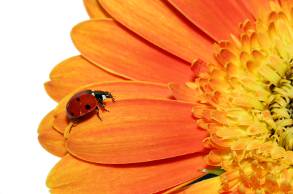 There are many things that you can do. In fact, this newsletter is focused on helping you cope. We are going to discuss the many different vitamins and minerals you can take to strengthen the immune system and to keep your allergies under control. Although, as many doctors will agree, it’s best to detox the body first in order to obtain optimum results. This is why we’ve included recommended detox methods in order to ensure that you reach your goals. We will also include a Yoga set and a meditation to strengthen your immune system, which can be done in the convenience of your own home.
There are many things that you can do. In fact, this newsletter is focused on helping you cope. We are going to discuss the many different vitamins and minerals you can take to strengthen the immune system and to keep your allergies under control. Although, as many doctors will agree, it’s best to detox the body first in order to obtain optimum results. This is why we’ve included recommended detox methods in order to ensure that you reach your goals. We will also include a Yoga set and a meditation to strengthen your immune system, which can be done in the convenience of your own home.
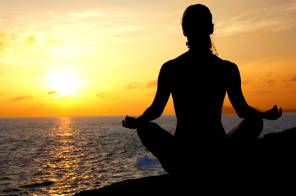
Enjoy!
 DETOXIFING YOUR BODY
DETOXIFING YOUR BODY
Most healing practitioners believe that the main cause of all sickness starts in the colon. Over the years, infrequent bowel movements can lead to a build-up of toxic waste in the small and large intestines. This inhibits the absorption of nutrients, and this toxic waste sometimes gets reabsorbed into the blood stream causing more harm to other areas of the body.
In women,deposits in the colon and the intestines create pressure on the reproductive organs, causing inflammation and pain. Some women may see their gynecologist who, unaware of the situation, may mistake the treatment and even recommend surgery.
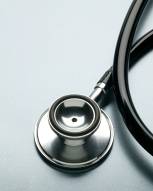
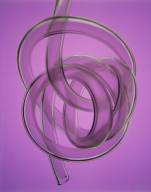
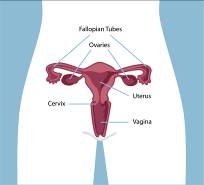 Toxins that are reabsorbed from the colon to the body need to be deposited somewhere else- such as the joints. You may wake up one morning with pain in the knee, and your doctor may recommend pain pills. This will cause the pain to go away for awhile, but it will keep adding toxins, making the blood more acidic which will in turn have you back at the doctor asking for stronger pills.
Toxins that are reabsorbed from the colon to the body need to be deposited somewhere else- such as the joints. You may wake up one morning with pain in the knee, and your doctor may recommend pain pills. This will cause the pain to go away for awhile, but it will keep adding toxins, making the blood more acidic which will in turn have you back at the doctor asking for stronger pills.
There are many misconceptions about normal bowel movements. One medical text says that every person has his own routine and if that routine is once every three days, that’s fine. This is untrue and not backed by any science whatsoever.
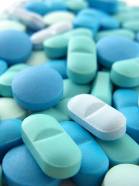 Ideally, you should have a bowel movement after every meal. Yes, this is not a misprint! What goes in has to go out. So if you eat three times a day, you should have three bowel movements a day. The stools should be at least six inches long and an half inch in diameter.
Ideally, you should have a bowel movement after every meal. Yes, this is not a misprint! What goes in has to go out. So if you eat three times a day, you should have three bowel movements a day. The stools should be at least six inches long and an half inch in diameter.
In his book “Food As Medicine”, Dr. Darma Singh Khalsa, M.D., recounts a story about giving anesthesia to one of his colleagues for a cancer surgery years ago. The patient was sixty-five and he was diagnosed with colon cancer. When the doctor read the medical history on the chart, it said that the patient had bowel movements only once every ten days. Dr. Darma Singh Khalsa said that this information was forever engraved in his memory as a sign of how important the health of the colon is to one’s overall wellbeing and longevity.
This is why it is so important to cleanse the body through colon cleanses.
 COLON THERAPY
COLON THERAPY
The use of colon therapy has been recorded as early as 1500 B.C. by the Egyptians and it has become known as a cure for different illnesses over the last decade. More recently, as we have returned to natural therapies and they have become more sophisticated, colon therapy has become even more popular.
 Today, colon therapy may be recommended by surgeons, cancer specialists, and stomach specialists.
Today, colon therapy may be recommended by surgeons, cancer specialists, and stomach specialists.
The technique consists of a simple enema performed by a specialist. The specialist uses machinery that introduces water to the colon through a tube. There are different ways to do this: some technicians use a table where the person lays down facing up, others a reclining chair, and others just have the person sit down.
For the best outcome, several sessions are needed.
The treatment is not painful, and there have been reports of between seven and ten pounds of waste being released.
For some people, even the thought of it may be painful. For these people, a natural herbal laxative tea or two 450 mg aloe vera tablets can start the cleansing process.
 FASTING
FASTING
For optimum results, fasting should be done in conjunction with the colon therapy, also known as colonics.
The following are important facts about fasting that you should know:
- Three days before beginning a fast, decrease the amount of food intake and eat more green foods and foods that contain water. Steamed vegetables are recommended during these days. Cut down or completely stop your intake of tobacco, alcohol, and coffee.
- Stop taking vitamins supplements except for the following:
-
- If you have a heart condition, you should keep taking vitamin E and the coenzyme Q10.
- If ill or immune-deficient, you should keep taking vitamin C daily, up to 3,000 mg diluted with fruit juice., or the effervescent option Emergency-C.
- If taking medications, do not stop taking them during the beginning of the fast, and, if you plan to reduce the intake of these medications, do so in conjunction with a physician.
- If you feel very weak, you can add a teaspoon of a natural sweetener like pure honey to your tea.
- No alcohol, tobacco, or coffee during the three days before the fast and during the fast.
- The organic fresh juices prepared for the fast must be drunk immediately.
- Patients with severe diabetes, active infections, mental instability, a weak heart, and certain types of cancer should not fast. Pregnant women and children under sixteen should not fast either.
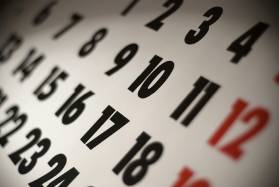 Energy is high during the fast so you should be able to do your job. If you have a physical job, you should plan to fast during times when you are not working intensely, such as during the weekends.
Energy is high during the fast so you should be able to do your job. If you have a physical job, you should plan to fast during times when you are not working intensely, such as during the weekends.
It is normal to feel hungry during the first three days of the fast. After that, the body adjusts itself and you start feeling less hungry and more energetic each day. When the cleanse is done, the hunger returns.
During the fast, no solid foods should be taken and you should drink plenty of liquids. There are different lengths for fasting; it could last one day or many days.
Ideally, everyone should fast one day per week in order to give our bodies a rest and the time necessary to assimilate all the foods.
There are many different types of fasting. Some fasts have a mono diet of a certain food or a combination of foods. The purest fast will be just water, but that will leave the person with no strength to keep up with their daily tasks.
This month, with purpose of cleansing and detoxifying the body to strengthen the immune system, we have chosen two different fasts recommended by Dr. Singh Khalsa, M. D.: the 36-hour fast and the week-long fast.
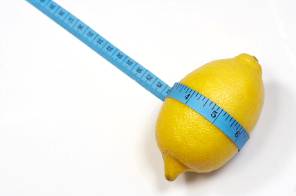 36-HOUR FAST
36-HOUR FAST
This fast is the perfect fast to keep up with your work.
First thing in the morning
- Drink a glass of hot water with half lemon juice. Wait an hour before breakfast. This is the perfect time to do your personal Yoga practice and meditation.
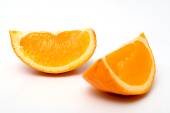 Breakfast
Breakfast
- One piece of organic fruit, and
You can choose from:
- Low fat organic cottage cheese, or
- Yogurt with small amount of organic honey.
- A cup of Ginger or Yogi Tea. (To sweeten the tea use fructose, stevia, or a small amount of organic honey, no artificial sweeteners or sugar.)
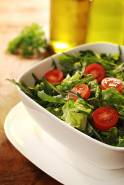 Lunch
Lunch
- A large green salad with lots of raw vegetables and sprouts. (No cheese, meat, or fish). No salad dressing with preservatives, cheese, sugar, or monosodium glutamate (MSG). The best salad dressing is extra virgin olive oil or flaxseed oil with cider vinegar or lemon with herbs and Brags Liquid Aminos instead of salt.
- One piece of whole or nine grain bread (with no butter).
- A cup of Ginger or Yogi Tea.
- At least 8 glasses of water.
 Dinner
Dinner
- No eating.
- A cup of Ginger or Yogi Tea, and
- A cup of hot water with half lemon juice.
Relax. You can do some affirmations or take a hot bath before you go to bed.
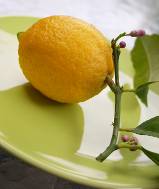 First thing in the morning
First thing in the morning
- Drink a glass of hot water with half lemon juice. Wait an hour before breakfast. This is the perfect time to do your personal Yoga practice and meditation.
Breakfast
First thing in the morning
- Drink a glass of hot water with half lemon juice or a cup of Ginger or Yogi Tea.
- 2 or 3 glasses of pure water.
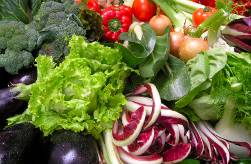 Lunch
Lunch
Now you are ready to break the fast. If you wish to extend it you can repeat the breakfast routine. Otherwise;
- Medium-size green salad with raw vegetables and two tablespoons of nuts. No salt. No dressing. Chew slowly. The point is to introduce the food to the system slowly.
½ Hour before Dinner
- 6oz of fresh squeezed organic juice. Recommended carrot, celery, and parsley.
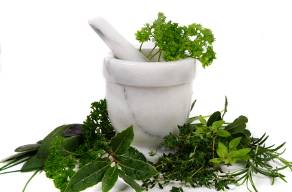 Dinner
Dinner
- Medium-size green salad with tomatoes, cucumbers, and a lemon or tomato juice dressing. (No oil.)
- 3 large organic lightly steamed vegetables. (Beans, spinach, broccoli, yellow zucchini.) No butter or salt. You can use herbs like rosemary, basil, or tarragon to add some flavor.
- A cup of Ginger or Yogi Tea.
A WEEK-LONG FAST
It is a simple meal plan that follows the 36 hour fast.

Breakfast
One glass of organic fruit juice,
15 minutes later, one piece of organic fruit.
Lunch
One glass of organic vegetable juice,
15 minutes later, organic vegetable salad
Dinner
One cup of Ginger or Yogi tea,
15 minutes later, a bowl of lightly steamed organic vegetables
 TIPS IF YOU GET HUNGRY
TIPS IF YOU GET HUNGRY
- Breathe through the left nostril. This calms you and helps you to get control over the metabolism.
- Drink water.
- Massage the feet with almond oil.
- Do a short meditation.
HOW TO BREAK THE FAST

This is one of the most important factors to a successful fast. The amount of food before and after the fast must be small.
The rule of thumb if you have fasted for a week is to be careful for three days after the fast. If you have only fasted for a few days, you should still be cautions for forty-eight hours.
Right after the fast, avoid potatoes, bananas, white flour, pasta, meats, and cheeses. Among all of the different types of rice, it is recommended that you eat basmati brown rice.
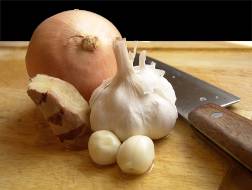 Garlic, onions, and ginger are highly recommended in your steamed vegetables.
Garlic, onions, and ginger are highly recommended in your steamed vegetables.
Stick with foods high in water content, raw or lightly steamed vegetables, along with brown basmati rice and mung beans.
Eat organic. Organic means food that has been grown without pesticides. Now that your system is clean, you can keep it this way and enjoy vibrant health by consuming more nutritious and less harmful foods.
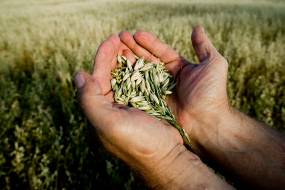 Consume non-GMO products. The cultivation of genetically engineered (GE) foods, also known as GMO, has become a big business. The benefits are bigger yields and lower chemicals, but they are not good for the land, the environment, or our health. Even though they are not yet restricted by law, they are still very dangerous. There have been many studies conducted about the harmful effects of GMO foods and the results are very scary.
Consume non-GMO products. The cultivation of genetically engineered (GE) foods, also known as GMO, has become a big business. The benefits are bigger yields and lower chemicals, but they are not good for the land, the environment, or our health. Even though they are not yet restricted by law, they are still very dangerous. There have been many studies conducted about the harmful effects of GMO foods and the results are very scary.
One of the most recommended meals after fasting is called Kitcheree, which is a combination of mung beans and rice. This is a high protein, nutritious and very digestible dish. In India, it is given to children when they are very sick. It can also be used as a monodiet. It suggested that you eat it for three days to a week after breaking a fast. In addition you can add yogurt.
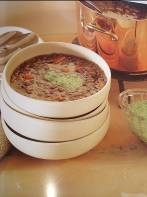 MUNG BEANS AND RICE
MUNG BEANS AND RICE
¾ cup mung beans
1 ½ cups basmati rice
1-inch piece of Kombu seaweed
4 quarts of water
2 onions, chopped
½ cup chopped gingerroot
½ bulb garlic, chopped
½ cup ghee (opt.)
½ tsp. coarsely ground pepper
2 tsp. cumin seeds
1 tsp. crushed red chilies
Sea salt or Braggs Liquid Aminos to taste
Bring water to boil in a 6-quart pot. Clean and rinse the beans and rice. Add them to the water and cook at a rolling boil.
Meanwhile, peal and chop the onion, gingerroot, and garlic and add to the pot.
Add all of the remaining ingredients.
Cook until the beans and rice are completely soft and almost indiscernible (total cooking about 1 ¼ hours)
Add Braggs Liquid Aminos, salt, or tamari soy sauce to taste.
Note: You can reduce the cooking time by soaking the mung beans in water the night before.
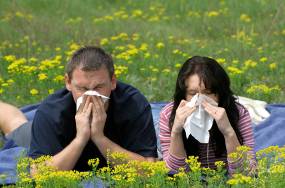 ALLERGIES
ALLERGIES
Allergies are caused by environmental pollution, and as a consequence food contamination. There are different vitamins and minerals you can take to reduce these reactions.
A mono diet of Mung beans and rice provides good nutrition, eliminates toxins, and helps the digestive system. You can follow this for a week or more. You should feel improvement within a week. It’s also recommended that you add omega 3 oils, as found in salmon, to reduce inflammation.

The greener you eat, the better. Leafy green vegetables like kale and broccoli have a powerful detoxifying effect on the body. All greens make the blood more alkaline, and this strengthens the immune system.
Manganese is a vitamin that is low in levels when experiencing allergies. There are different foods you can eat which contain high levels of manganese:
- Buckwheat,
- Beans,
- Peas,
- Blueberries.
These are the supplements and nutrients recommended by Dr. Singh Khalsa, M.D., for allergies.
SUPPLEMENTS
Besides the daily multi-vitamin, the following vitamins are recommended:
Most important
Bioflavonoid Dose: 100mg three times a day. Found in grapeseed oil.
Coenzyme Q10 Dose: 100mg a day.
Vitamin C Dose: 12,000 mg in six divided doses a day (if you get diarrhea decrease the dose).
Less important
DHEA Dose: 25 to 100 mg a day. Also used for anti-aging.
Magnesium Dose: 500 to 1,000 mg a day. It reduces stress, anxiety, muscular spasms, and tension.
N-aceylcysteine Dose: 600 mg per day. It is a powerful detoxifier for alcohol and other substances.
Omega 3 oil Dose: 1,500 mg per day. For allergies, the best form is gamma linolenic acid from borage oil.
Panthenic acid Dose: 3000 to 500 mg. Good for adrenals and thymus.
(Vitamin B5)
HERBS
Stinging nettle Dose: 750 mg per day. Good for the immune system.
INMUNE SYSTEM
These are the supplements and nutrients recommended by Dr. Singh Khalsa, M.D., for the immune system.
SUPPLEMENTS
Besides the daily multi-vitamin, the following vitamins are recommended:
Most important
Vitamin C Dose: 3,000 to 10,000 mg a day. (If you get diarrhea, decrease the dose.)
Less important
MGN3 Dose: 3 grams a day. It increases the activity of the killer cells. It’s made from rice bran.
HERBS
Most important
Echinacea Dose: 500 to 1,000 mg three times a day.
Less important
Ginseng Dose: 250 to 500 mg a day. It’s especially good when recovering from an illness.
Pycnogenol Dose: 100 mg. Boosts the immune system.
RECOMMENDED AMOUNTS OF DAILY VITAMINS
Vitamin A (beta-carotene and mixed carotenoids) Dose: 10,000 to 15,000 units.
Protects the cell membranes and DNA.
- February 2007 – Sexuality and Spirituality
- March 2007 – Detoxify Your Body
- April 2007 – Vibrations and Mantras
- May 2007 – Yoga exercises to Loss Weight, cleanses & recipes
- June 2007 – Sadhana, Aradhana, Prabhupati & Amazing Yogis & Fabulous Yoga Workshops
- July 2007 – Spiritual Beings Having A Human Experience
- August 2007 – Happiness
- September 2007 – The Mind
- October 2007 – One day in “MINDFULNESS”
- November 2007 – I Always Want More
- January 2008 – News exciting
- March 2008 – Oneness
- August 2008 – Summer
- September 2008 – Fall
- December 2008 – Winter
- March 2009 – Spring
- April 2009 – Newsletter
- May 2009 – Relaxation Techniques
- June 2009 – Learn to Meditate
- July 2009 – Inspiration
- September 2009 – Men’s Yoga
- October 2009 – Chakras
- December 2009 – The Light Within
- January 2010 – Living An Empty Life
- February 2010 – Our Essence
- May 2010 – Konalani Sharanam
- November 2010 – Osho’s Awakening – by Osho
- December 2012 – The Shift
- February 2013 – TANTRIC SEX
